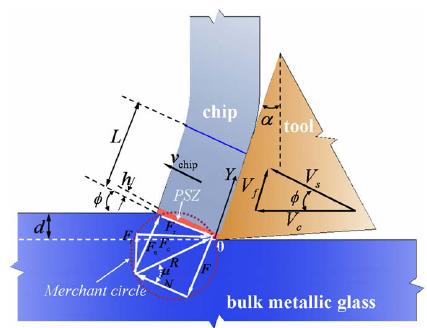The unique lamellar chips formed in turning-machining of a Vit 1 bulk metallic glass (BMG) are found to be due to repeated shear-band formation in the primary shear zone (PSZ). A coupled thermomechanical orthogonal cutting model, taking into account force, free volume and energy balance in the PSZ, is developed to quantitatively characterize lamellar chip formation. Its onset criterion is revealed through a linear perturbation analysis. Lamellar chip formation is understood as a self-sustained limit-cycle phenomenon: there is autonomous feedback in stress, free volume and temperature in the PSZ. The underlying mechanism is the symmetry breaking of free volume flow and source, rather than thermal instability. These results are fundamentally useful for machining BMGs and even for understanding the physical nature of inhomogeneous flow in BMGs.

This paper was published as:
Jiang MQ, Dai LH. Formation mechanism of lamellar chips during machining of bulk metallic glass. Acta Materialia,57(9):2730-2738(2009)